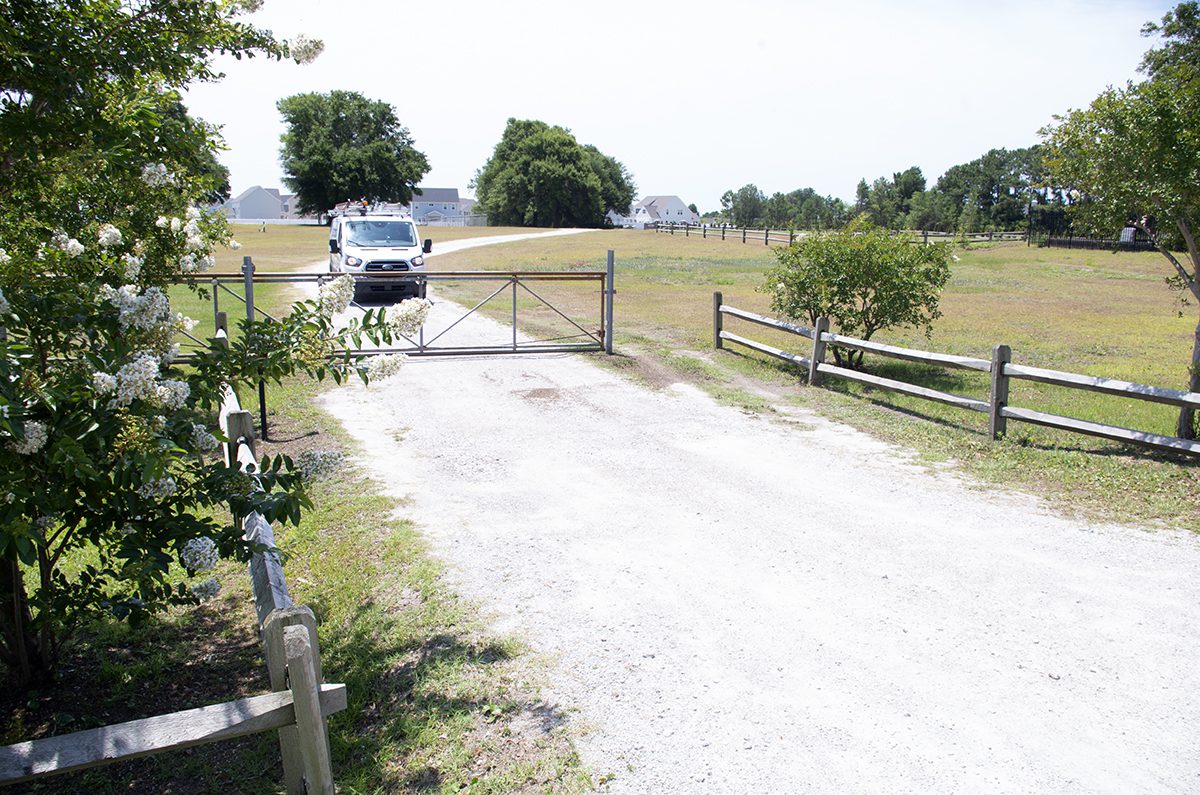
A contentious provision that would all but eliminate protections for archaeologically significant resources was stripped from an energy and environmental bill at the eleventh-hour last week, just days after an altercation at a site where Native American human remains were found during construction.
Sen. Norm Sanderson, R-Pamlico, asked the Senate late Wednesday evening to approve the amendment for House Bill 385, “Various energy/environmental changes,” that removed a section dealing “with all the archaeological situations that we have in North Carolina that have kind of sprung up on us recently.” Sanderson also represents Carteret, Chowan, Dare, Hyde, Pasquotank, Perquimans and Washington counties.
Supporter Spotlight
The bill first stirred up controversy when a provision was introduced June 6 during a Senate committee meeting that targeted the Coastal Area Management Act, which turned 50 this year. Among the changes were to restrict the Division of Coastal Management’s authority when issuing CAMA permits, including the division’s ability to consult other state agencies, such as the Office of State Archaeology.

The North Carolina Department of Natural and Cultural Resources, in a June 10 response after the provision became public, explained that the language was “associated with a subdivision in Carteret County that is currently under construction where extensive Native American human burials and an undisturbed Woodland period (1000 BC – AD 1600) village site have been found.”
The bill’s language was edited after the June 6 meeting. The proposed CAMA overhaul was removed June 19, and then the attempt to simplify the Office of State Archeology’s involvement in development was tweaked during committee meetings June 25 and 26.
Sanderson continued that striking the section would allow more time to work on the language and bring in more stakeholders, to ensure that “this is an adequate bill and a very good bill going forward. We’ll do that in the long session,” he said, referring to the North Carolina General Assembly’s odd-year session that begins in January.
The Senate voted 29-18 to send House Bill 385 back to committee in the lower chamber. The measure still included controversial points, including a proposed terminal groin for Bald Head Island, and it appears stalled for now.
Supporter Spotlight
“We appreciate that the Senate paused legislative changes related to the Office of State Archaeology. We will continue to work with legislators as we seek to protect our state’s invaluable archaeological resources,” Cultural Resources Communications Director Schorr Johnson said Thursday.
Tuscarora Nation of North Carolina Public Relations Officer Rahnàwakęw Donnie McDowell told Coastal Review that while Tuscarora Nation considers the removal of the archaeological provisions was “a giant win,” he said that knowing that the issue will return again next session, “continues to drive our concern that developers and their legal allies will use their money and clout to grow their support for completely removing archaeological protections from all sites across the state.”
McDowell expressed his concern that “HB 385 has gained so much attention no one is talking about our tribal reaffirmation bill, HB 970.”
Tuscarora leaders are concerned that the attention to the archaeological provision has undermined the bill that would grant state recognition to the Tuscarora of Eastern North Carolina, add two members of the Tuscarora to the State Commission of Indian Affairs, and make Tuscarora people eligible for federal benefits and services.
House Bill 970 has been stalled in the House appropriations committee since early May.
Sanderson didn’t mention a specific archaeological situation last week during the Senate meeting, but the move to strike the provision came just days after a confrontation at the Bridge View development.
Tuscarora Nation of North Carolina, the Occaneechi Saponi and other extended Indigenous relatives, allies and supporters met in Cedar Point, “to peaceably honor the ancestors’ remains unearthed by construction and surveys,” Tuscarora leaders said in a June 24 statement.
Residents of the nearby development proclaimed that the 17 Rivers North Carolina American Indian Movement and Tuscarora participants “should get off the land across the road from the development, which is currently undeveloped,” the statement continues. “Tuscarora Nation members, witnessing this outrageous experience, report that a resident of the Cedar Point development physically assaulted a Native woman and her children.”
The Carteret County Sheriff’s Office issued a statement June 25 saying that when deputies arrived on scene, they discovered that an altercation had occurred and one resident had been stabbed in the arm with a small pocket knife. One suspect had been identified and warrants were obtained. The sheriff’s office said that this is an ongoing investigation and details would be released when appropriate.
Dr. Crystal Cavalier-Keck, a citizen of the Occaneechi Band of the Saponi Nation and co-founder of 7 Directions of Service, an Indigenous-led environmental justice and community, explained during a press conference June 26 that she was in Cedar Point for the prayer.
“I am personally traumatized as one of the participants who escaped and naively waited for the others only to be told by legal, political, and spiritual leaders I trust that I could not rely on law enforcement protection in that county and to get my victims to safety. Because we were afraid for our lives, we drove three hours until we arrived safely at a place we trusted and a physician could see and address their physical damages,” said Cavalier-Keck.
Bridge View residents issued a statement June 27 that “As a community, we respect the ongoing archaeological efforts and the preservation of history. We ask that our safety, privacy and property investment, as well as the laws regarding trespassing on private property, receive equal respect from stakeholders and citizens and that these priorities are taken into account in future words and actions because they are at the forefront of our minds,” WRAL reported.
“We are discouraged to see inaccuracies being reported about our neighbors and the beautiful place that we call home. Bridge View residents are largely learning about archaeological finds within our subdivision alongside the general public through the media. We have little to no prior knowledge of what has been unearthed and where, or the future of development within our gates,” the statement continues. “Those questions are best directed to the North Carolina Office of State Archaeology and the residential developer, not the Bridge View residents who have been the subjects of unsolicited attention and aggression and placed in the middle of a debate beyond our control.”







